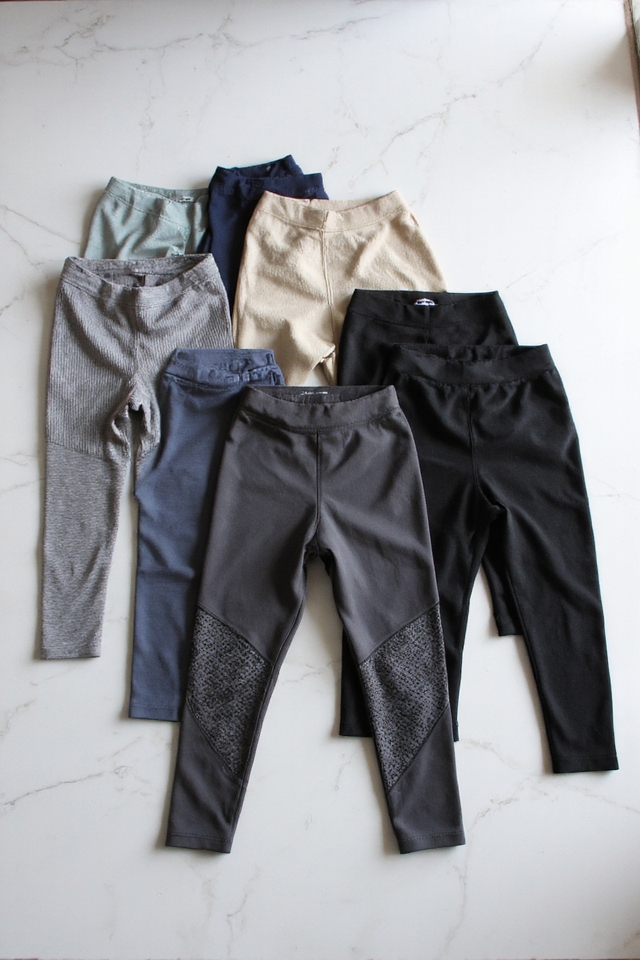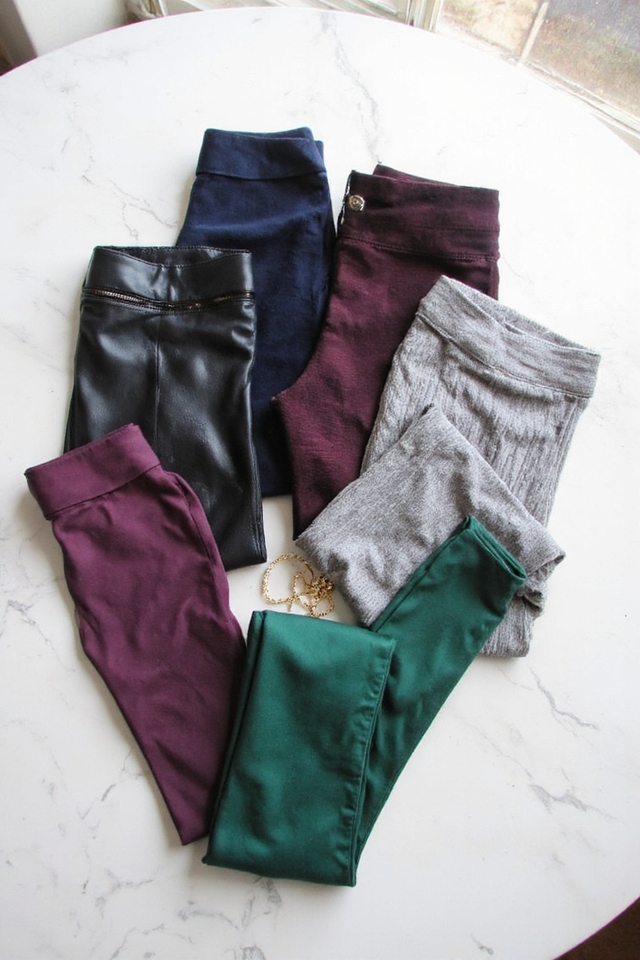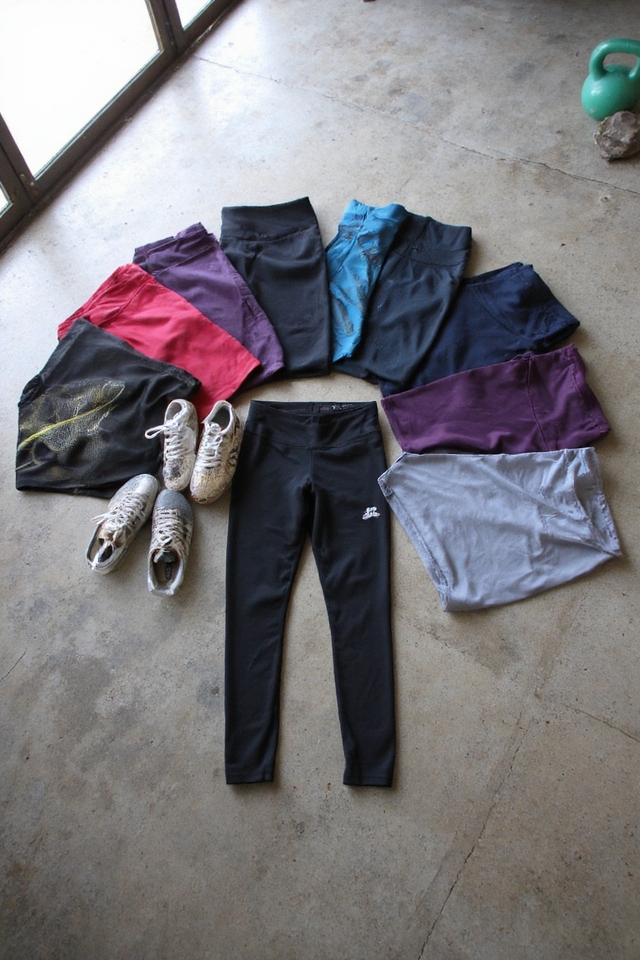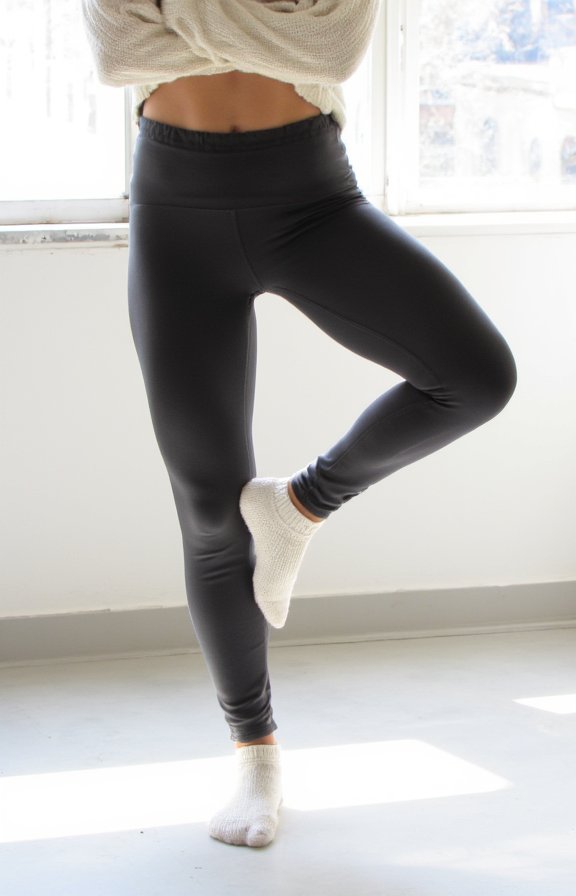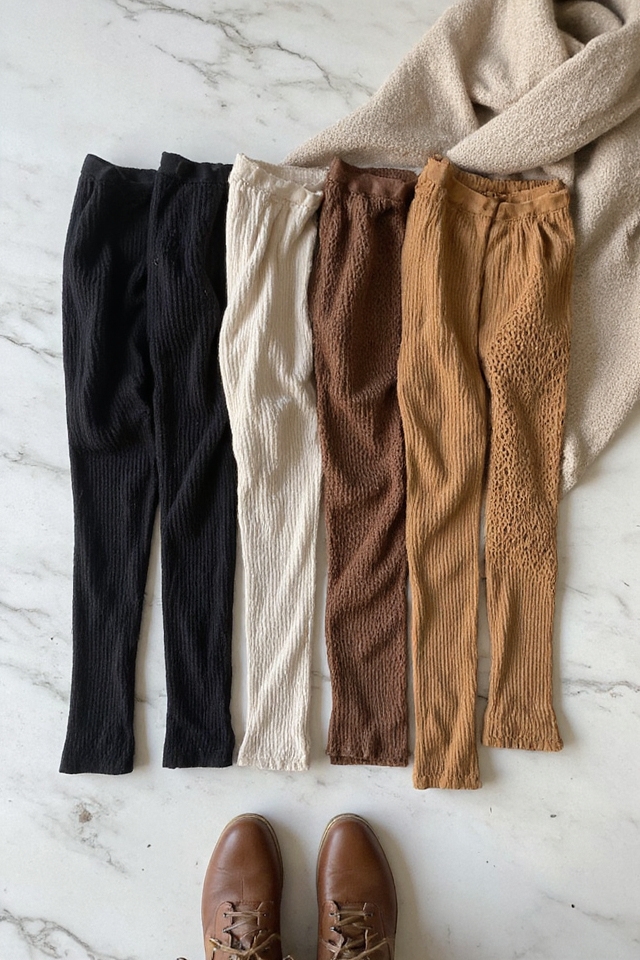When you’re managing EDS, compression leggings become your secret weapon for joint stability and pain relief. You’ll find maternity styles with built-in belly bands, high-waisted options that wrap your core like a supportive hug, and gentle light-compression pieces perfect for sensitive skin days. For severe instability, medical-grade deep compression works wonders, while performance leggings keep you moving confidently through workouts. Thermal compression soothes aching joints, and post-surgical styles support recovery. Each type transforms your daily comfort in unique ways.
Maternity Compression Leggings for Abdominal Support
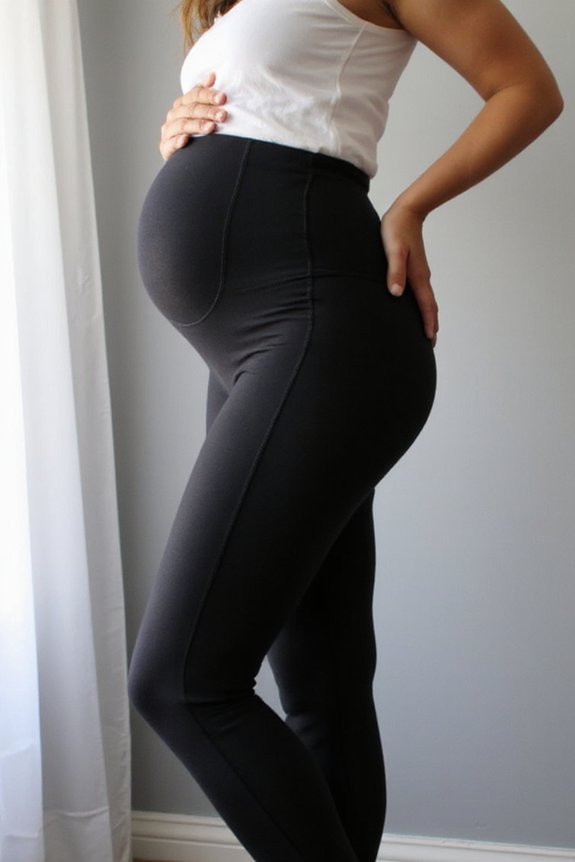
When you’re expecting and dealing with EDS, your body needs extra support that regular maternity wear just can’t provide.
Look for maternity compression leggings with built-in belly bands that’ll cradle your bump while stabilizing those hypermobile joints. The graduated compression technology targets your hips, pelvis, and lower back.
You’ll appreciate the moisture-wicking fabric that stretches with you through every trimester.
High-Waisted Compression Leggings for Core Stability
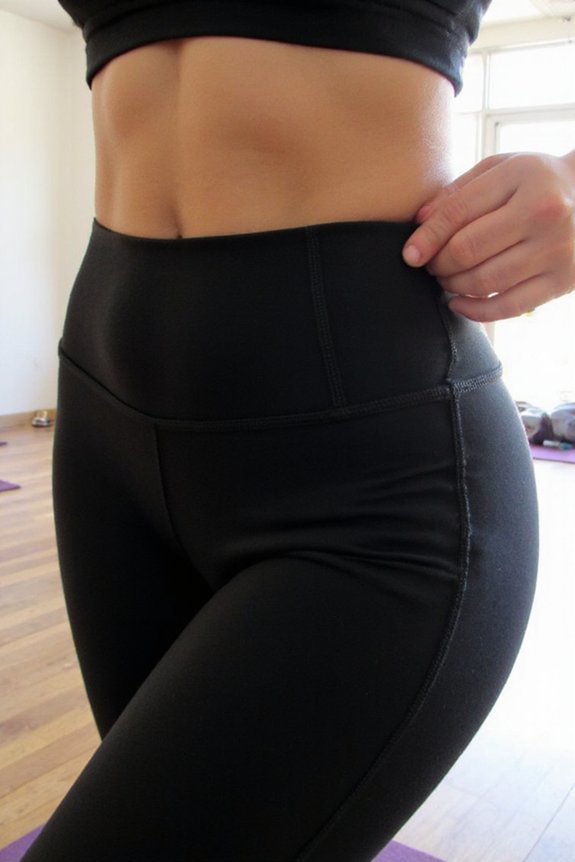
Since your core acts as your body’s natural stabilizer, high-waisted compression leggings become essential when you’re managing EDS-related instability.
They’ll wrap snugly around your midsection, supporting those hypermobile joints from hip to ribcage. You’ll notice improved posture immediately, especially when paired with structured tops.
Look for wide, reinforced waistbands that won’t roll down during movement—they’re your secret weapon for all-day comfort.
Light Compression Leggings for Sensitive Skin
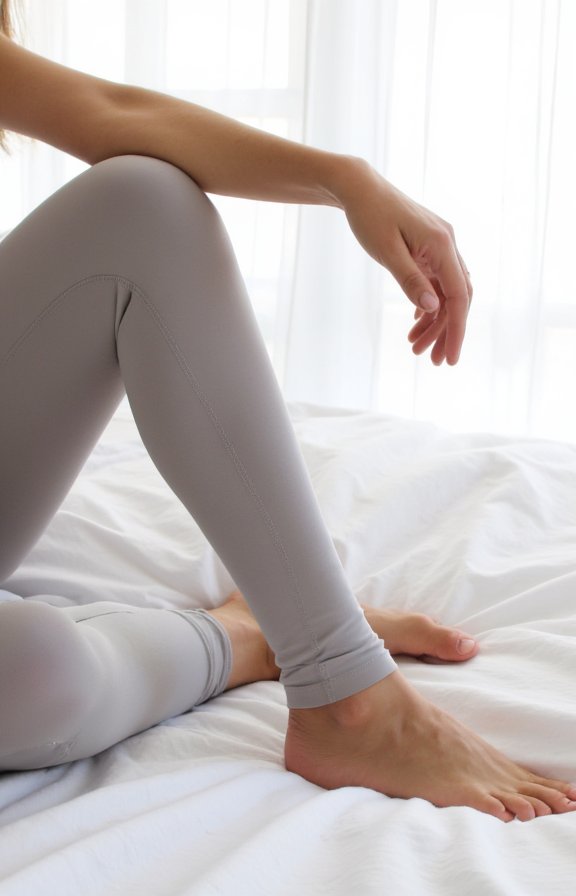
If you’re dealing with sensitive skin alongside EDS, light compression leggings offer the perfect balance of support without irritation.
Look for seamless construction and buttery-soft fabrics like modal blends. These barely-there options provide gentle pressure that won’t trigger flare-ups.
Choose flat-lock stitching and tagless designs. You’ll get the stability you need while keeping your skin happy, comfortable, and rash-free all day.
Deep Compression Leggings for Severe Joint Instability
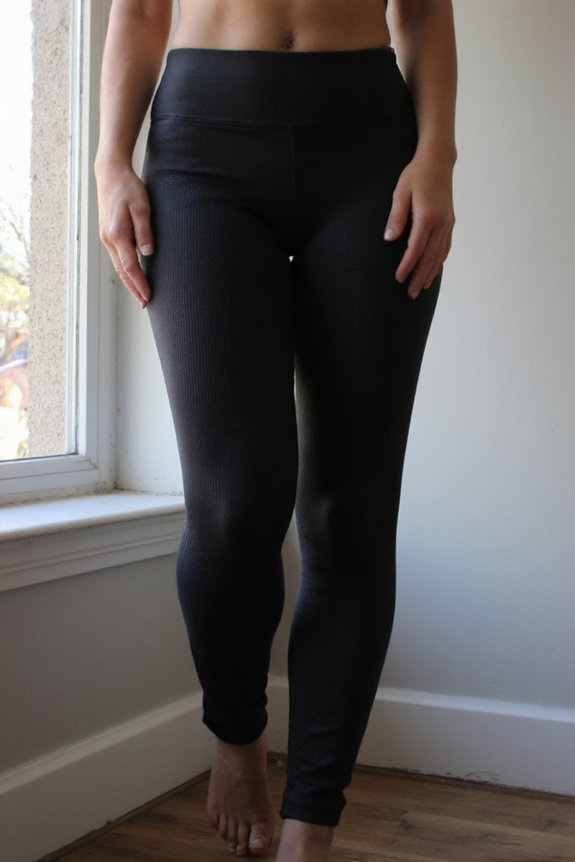
For those days when your joints feel like they’re barely holding together, you need serious support from deep compression leggings.
Look for medical-grade options with 20-30mmHg compression levels. These powerhouse pieces stabilize your hips, knees, and ankles while preventing subluxations.
Choose reinforced waistbands, flat-lock seams, and moisture-wicking fabrics. You’ll appreciate the locked-in feeling during flare-ups when every movement counts.
Performance Compression Leggings for Physical Activity
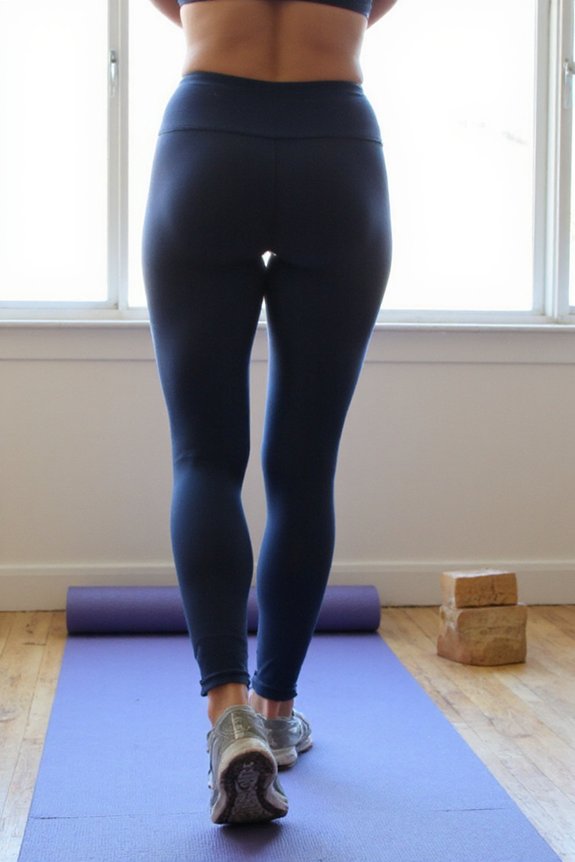
When you’re ready to move your body despite EDS challenges, performance compression leggings become your best workout partner.
They’ll stabilize your joints during yoga, walking, or gentle strength training.
Look for moisture-wicking fabrics with graduated compression zones that target your knees, hips, and ankles.
The best options feature reinforced waistbands that won’t roll down and flatlock seams that prevent chafing during movement.
Thermal Compression Leggings for Pain Relief
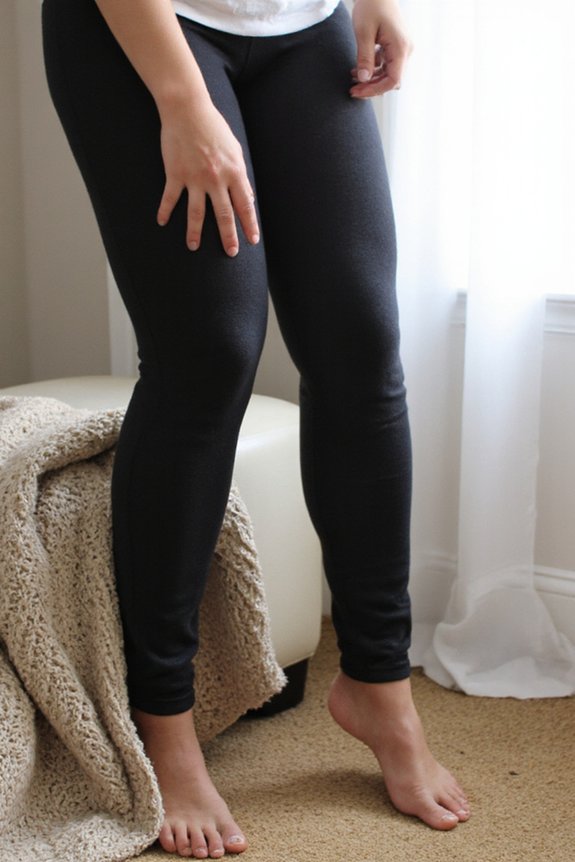
Beyond supporting your joints, thermal compression leggings tackle another major EDS concern: chronic pain and poor circulation.
The fleece-lined or merino wool blends trap body heat, soothing achy muscles while maintaining compression.
You’ll find copper-infused options that claim anti-inflammatory benefits, though results vary.
These work beautifully under straight-leg jeans or wide trousers during winter months, keeping you warm without bulk.
Post-Surgical Compression Leggings for Recovery Support
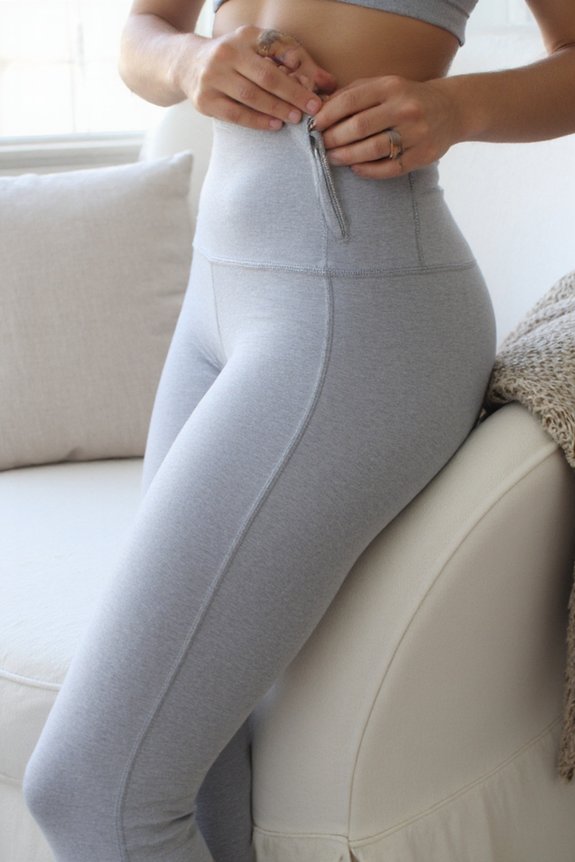
After surgery, you’ll need compression leggings that balance medical-grade support with gentle comfort during healing.
Look for graduated compression designs with flat-lock seams that won’t irritate incisions. You’ll want pairs with adjustable waistbands and side zippers for easy dressing.
Choose moisture-wicking fabrics in neutral tones that layer seamlessly under loose recovery wear. These specialized leggings help reduce swelling while protecting sensitive areas.
Frequently Asked Questions
How Do I Determine the Right Compression Level for My EDS Type?
You’ll want to consult your doctor first about compression levels for your specific EDS type.
Generally, start with lighter compression (15-20 mmHg) and see how you feel. If you need more support, gradually increase to medium (20-30 mmHg).
Listen to your body – you should feel supported, not restricted. Track how different levels affect your pain, fatigue, and circulation.
Everyone’s needs vary, so finding your perfect compression takes patience.
Can Compression Leggings Replace Medical Braces or Orthotics?
You shouldn’t think of compression leggings as replacements for medical braces or orthotics.
They’re supplementary support pieces that work alongside your prescribed medical devices. While quality compression leggings provide muscle stabilization and joint awareness, they can’t match the targeted, structural support of custom orthotics.
Wear them together for best results – your sleek leggings under clothes, your braces where needed.
Always consult your doctor before making any changes to your support system.
How Often Should I Wash Compression Leggings to Maintain Effectiveness?
You’ll want to wash your compression leggings after every wear to maintain their effectiveness.
The oils, sweat, and bacteria from your skin break down the elastic fibers, reducing their supportive power.
Use cold water and gentle detergent, then air dry them flat.
Never use fabric softener or bleach – they’ll destroy the compression technology.
With proper care, quality compression leggings should maintain their support for about six months of regular use.
Are There Specific Brands That Specialize in Eds-Friendly Compression Wear?
Yes, you’ll find several brands that truly understand EDS needs.
CRX Compression creates medical-grade pieces with graduated support that won’t roll down.
Marena Recovery offers customizable compression levels, perfect for fluctuating symptoms.
You’ll love Solidea’s seamless designs that prevent pressure points.
For everyday wear, try Juzo’s fashion-forward options that look like regular leggings.
These specialized brands use flat-lock seams, moisture-wicking fabrics, and strategic compression zones specifically designed for EDS bodies.
Will Insurance Cover Compression Leggings Prescribed for EDS Management?
You’ll find insurance coverage varies widely for compression garments.
If your doctor prescribes compression leggings specifically for EDS management, you’ve got a better shot at reimbursement.
Submit detailed documentation including your diagnosis, prescription, and medical necessity letter.
Some plans cover them under durable medical equipment, while others don’t.
Check your policy’s specifics and appeal denials.
Consider using FSA or HSA funds if insurance won’t budge.
